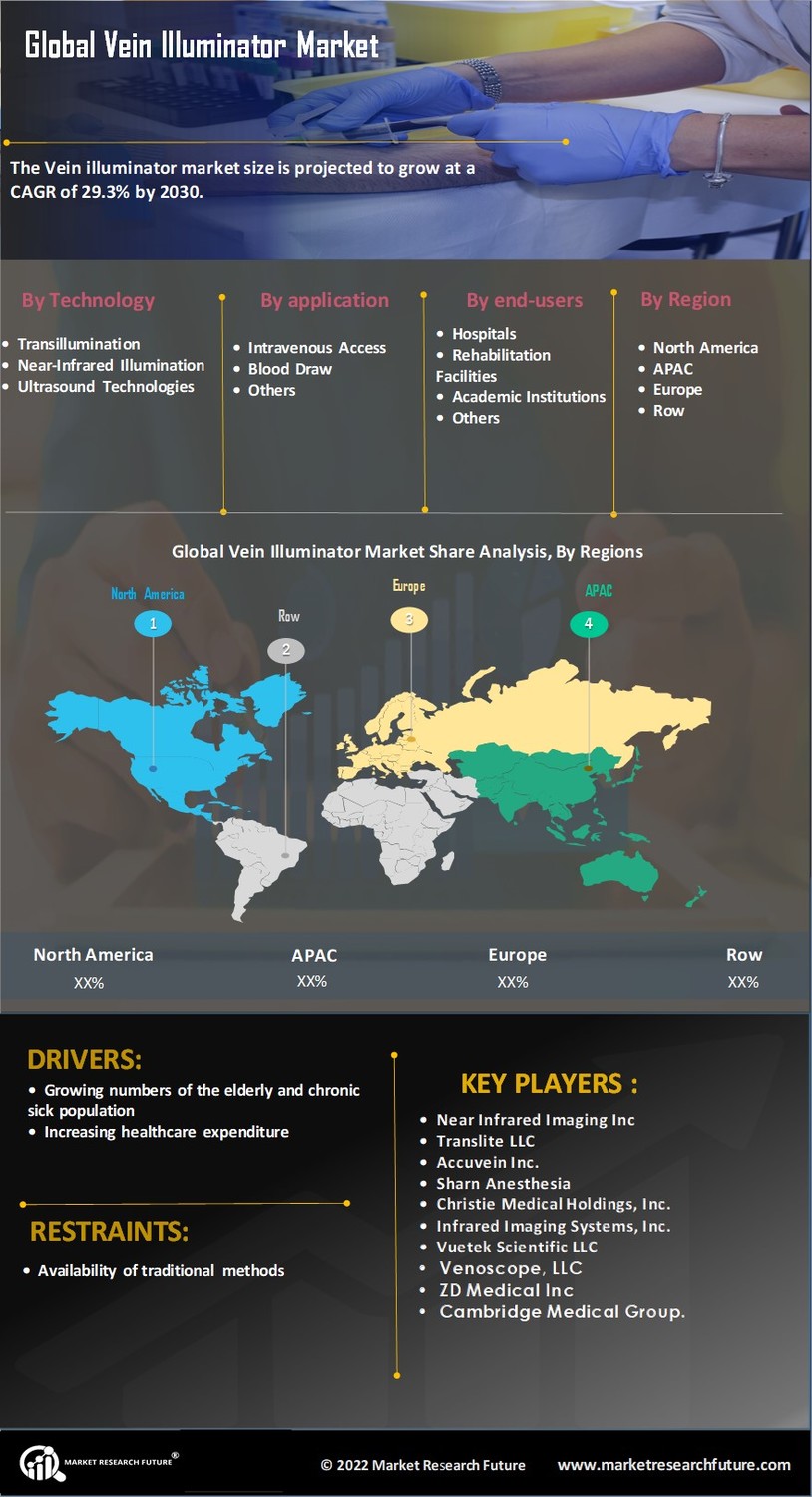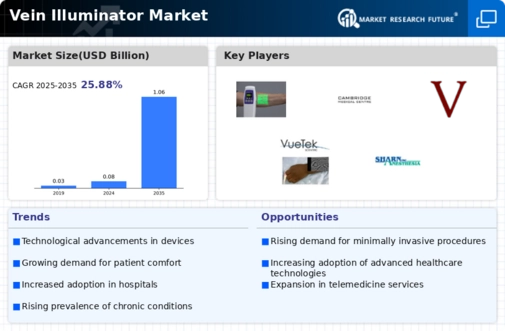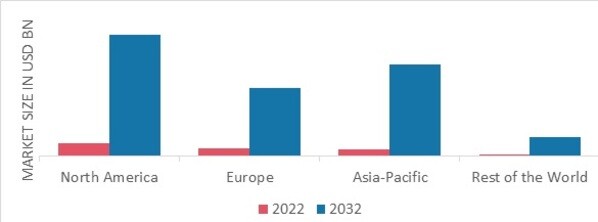Market Growth Projections
The Global Vein Illuminator Market Industry is projected to experience substantial growth over the next decade. The market is expected to expand from 0.08 USD Billion in 2024 to an impressive 1.06 USD Billion by 2035, indicating a robust compound annual growth rate of 25.95% from 2025 to 2035. This growth trajectory reflects the increasing adoption of vein illuminators in various healthcare settings, driven by factors such as technological advancements, rising chronic disease prevalence, and heightened awareness of patient comfort. The market's expansion is indicative of the evolving landscape of medical devices and the ongoing demand for innovative solutions in patient care.
Growing Awareness of Patient Comfort
Patient comfort has emerged as a critical factor in healthcare delivery, significantly impacting the Global Vein Illuminator Market Industry. As patients become more informed about their treatment options, there is a growing expectation for healthcare providers to minimize discomfort during procedures. Vein illuminators address this need by enhancing the visibility of veins, thereby reducing the number of attempts required for successful venipuncture. This focus on patient-centered care is driving the adoption of vein illuminators across various healthcare settings, including hospitals and outpatient clinics. The emphasis on improving patient experiences is likely to bolster market growth in the coming years.
Increasing Prevalence of Chronic Diseases
The Global Vein Illuminator Market Industry is significantly influenced by the rising prevalence of chronic diseases, which necessitate frequent blood draws and intravenous access. Conditions such as diabetes, cardiovascular diseases, and obesity require regular monitoring and treatment, leading to an increased demand for efficient venipuncture techniques. Vein illuminators serve as essential tools in these scenarios, enabling healthcare professionals to locate veins quickly and accurately. As the global population ages and the incidence of chronic diseases rises, the market for vein illuminators is poised for substantial growth, reflecting the urgent need for improved patient care and treatment efficiency.
Technological Advancements in Medical Devices
Technological innovations play a pivotal role in shaping the Global Vein Illuminator Market Industry. The introduction of advanced imaging technologies, such as infrared and near-infrared light, enhances the accuracy of vein detection, thereby improving patient outcomes. These advancements not only facilitate quicker procedures but also minimize the risk of complications associated with venipuncture. As healthcare facilities continue to invest in state-of-the-art equipment, the demand for vein illuminators is expected to rise significantly, contributing to the overall market growth. This trend underscores the importance of continuous research and development in the medical device sector.
Rising Demand for Minimally Invasive Procedures
The Global Vein Illuminator Market Industry experiences a surge in demand for minimally invasive procedures, driven by advancements in medical technology and patient preference for less traumatic interventions. Vein illuminators enhance visibility during venipuncture, thereby reducing the discomfort associated with traditional methods. This trend is particularly evident in outpatient settings, where the need for efficient and effective procedures is paramount. As healthcare providers increasingly adopt these devices, the market is projected to grow from 0.08 USD Billion in 2024 to an estimated 1.06 USD Billion by 2035, reflecting a compound annual growth rate of 25.95% from 2025 to 2035.
Regulatory Support for Innovative Medical Technologies
The Global Vein Illuminator Market Industry benefits from increasing regulatory support for innovative medical technologies. Regulatory bodies are recognizing the importance of devices that enhance procedural efficiency and patient safety. This support facilitates the introduction of new vein illuminators into the market, encouraging manufacturers to invest in research and development. As regulations evolve to accommodate advancements in medical technology, the market is expected to expand, providing healthcare providers with access to cutting-edge solutions. This trend highlights the collaborative efforts between regulatory agencies and the medical device industry to improve healthcare outcomes.
















